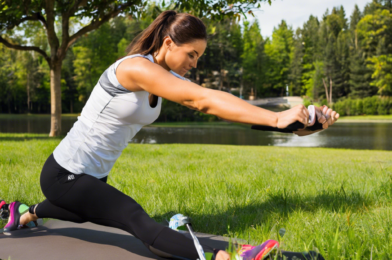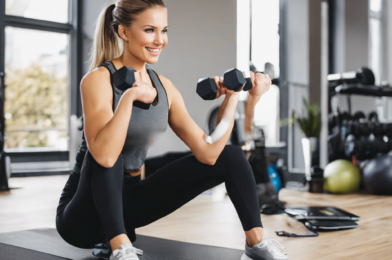With the fitness industry booming and an ever-growing number of “experts” sharing their tips and tricks, it’s hard to separate fact from fiction when it comes to our health. From miracle diets to secret workouts, we’re constantly bombarded with new trends and fads promising the world. It’s time to separate the fitness facts from the fiction and uncover what really works.
First, let’s address the idea that you need to spend hours in the gym to see results. This is simply not true. Quality always trumps quantity. A well-structured workout plan that focuses on intensity and proper form will deliver far better results than endless hours of mindless exercise. Short, high-intensity interval training (HIIT) workouts, for example, can provide incredible benefits in a fraction of the time of traditional cardio.
The myth that spot reduction is achievable is another persistent untruth. Targeting specific areas of body fat, like trying to lose weight only from your arms or abs, is simply not possible. Our bodies store and burn fat based on genetic and hormonal factors. A balanced approach to weight loss that includes a healthy diet and varied workouts is the key to success.
The notion that you should “feel the burn” and push through muscle soreness is also misleading. While a little muscle soreness is normal after a tough workout, it’s important to listen to your body and not push yourself too hard. Overtraining can lead to injuries and hinder your progress. Allowing for proper recovery and rest is just as important as the workout itself.
It’s also a common misconception that you need to cut out carbs to lose weight. Carbohydrates are not the enemy; in fact, they are essential for energy and proper bodily function. A balanced diet that includes complex carbohydrates, proteins, and healthy fats is the best approach. Quick-fix diets that eliminate entire food groups are neither sustainable nor healthy and can often do more harm than good.
So, what really works when it comes to fitness? A holistic approach that combines consistent and varied workouts with a nutritious and balanced diet is key. Listen to your body, focus on quality over quantity, and don’t fall for the quick-fix myths that are all too prevalent in the fitness industry. Remember, fitness is a journey, and embracing a healthy lifestyle will always deliver better results than chasing shortcuts.
Now, let’s address some specific workout myths. You may have heard that morning workouts are superior, but this is simply not true. While some people prefer to exercise in the morning to get it out of the way, the reality is that your body is ready for exercise at any time of day. Whether you’re a night owl or an early bird, find a workout schedule that suits your routine and stick to it. Consistency is far more important than the time of day you choose to exercise.
The idea that you need to spend a lot of money on gym memberships or expensive equipment to get in shape is also a myth. You don’t need fancy gear or exclusive gym access to achieve your fitness goals. There are plenty of free online resources and bodyweight exercises that you can do anywhere. Walking, running, and using your own body weight for resistance are all accessible and effective ways to get moving and improve your fitness level.
Finally, the notion that pain equals gain is a dangerous myth. While it’s normal to feel challenged during a workout, you should never feel actual pain. Working through pain can lead to injuries and set you back in your fitness journey. It’s important to understand the difference between pushing yourself out of your comfort zone and pushing yourself to the point of injury. Always listen to your body and adjust your workouts accordingly.
In summary, navigating the world of fitness can be challenging, but by debunking these common myths, you can make informed decisions about your health. Embrace a holistic approach to wellness, listen to your body, and don’t fall for the quick-fix promises that are all too common in the fitness industry. Your journey to a healthier you will be filled with informative research and exciting new exercises.









